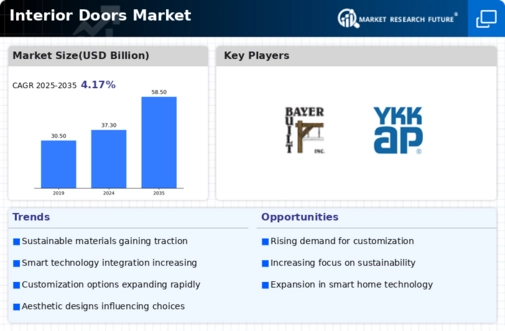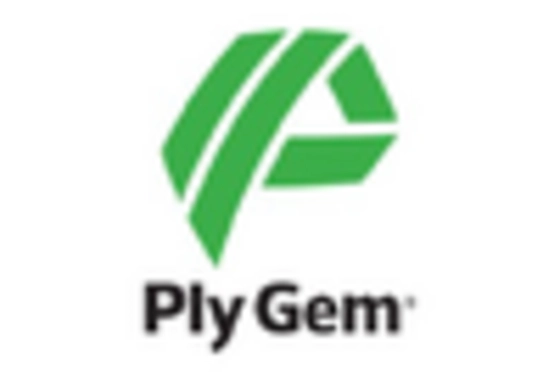Market Analysis
In-depth Analysis of Interior Doors Market Industry Landscape
The interior doors market operates within a dynamic landscape influenced by a variety of factors that impact supply, demand, and pricing dynamics. Interior doors are essential components of residential, commercial, and institutional buildings, serving functional and aesthetic purposes. One of the primary drivers of market dynamics is the construction sector, which accounts for a significant portion of interior door demand. Trends in construction activities, influenced by factors such as population growth, urbanization, and housing demand, directly affect the demand for interior doors. Additionally, renovation and remodeling activities in existing buildings contribute to market dynamics as homeowners and businesses seek to upgrade their interior spaces, leading to increased demand for interior doors.
Supply dynamics in the interior doors market are influenced by factors such as raw material availability, manufacturing capabilities, and technological advancements. Wood, steel, fiberglass, and composite materials are commonly used in interior door production, with each material offering distinct characteristics in terms of aesthetics, durability, and cost. The availability and cost of these raw materials, influenced by factors like forestry practices, metal prices, and technological innovations, affect production costs and supply dynamics in the market. Manufacturing capabilities, including production capacity, efficiency, and quality control measures, also play a crucial role in shaping supply dynamics by determining the ability of manufacturers to meet market demand.
Market dynamics are further influenced by factors such as design trends, consumer preferences, and regulatory standards. Design trends in interior architecture and decor, influenced by factors such as fashion, lifestyle, and cultural preferences, drive demand for specific door styles, materials, and finishes. Consumer preferences for features like sound insulation, fire resistance, and energy efficiency also shape market dynamics by influencing product specifications and purchasing decisions. Moreover, regulatory standards related to building codes, safety regulations, and environmental certifications influence market dynamics by setting requirements for product performance, installation, and environmental impact.
Pricing dynamics in the interior doors market are influenced by a combination of factors including raw material costs, manufacturing expenses, competitive pressures, and market demand-supply dynamics. Fluctuations in raw material prices, such as wood, steel, or fiberglass, directly impact production costs for door manufacturers, thereby influencing pricing decisions. Manufacturing expenses, including labor costs, energy costs, and overhead expenses, also play a role in determining product pricing. Competitive pressures within the industry, driven by factors like market concentration, brand reputation, and product differentiation, influence pricing strategies adopted by market players. Additionally, demand-supply imbalances, seasonal variations, and unforeseen disruptions in the supply chain can exert short-term pressures on prices.
Environmental considerations and sustainability trends are increasingly shaping market dynamics in the interior doors industry. With growing awareness of environmental issues and sustainable development goals, stakeholders across the construction value chain are prioritizing the use of eco-friendly building materials and products. Interior doors made from sustainable materials, such as certified wood or recycled materials, align with the goals of green building initiatives and sustainable construction practices. Consequently, market dynamics are influenced by factors such as certification programs promoting sustainable forestry practices, government incentives for green building projects, and consumer preferences for environmentally friendly products.

















Leave a Comment